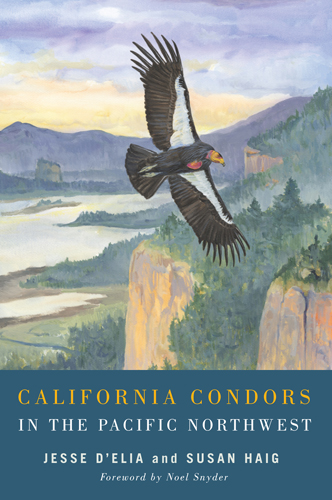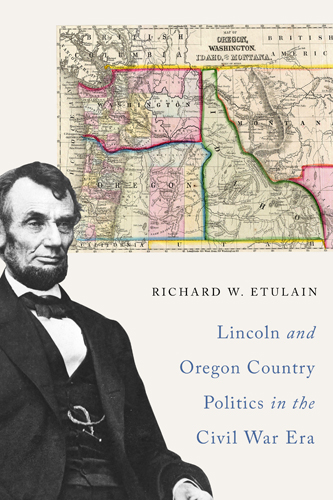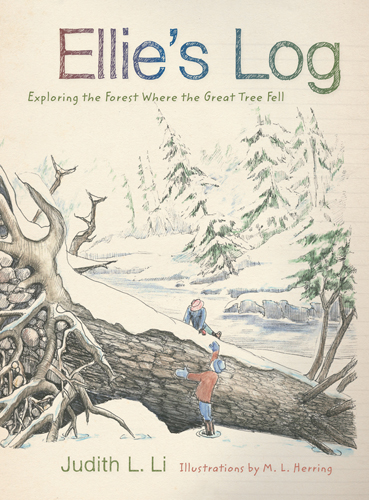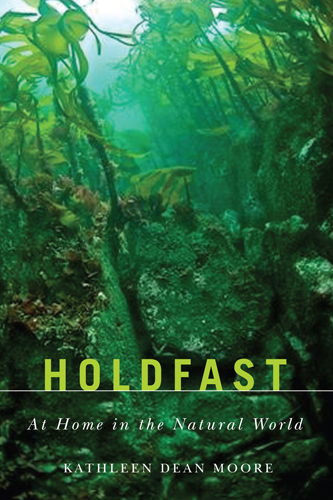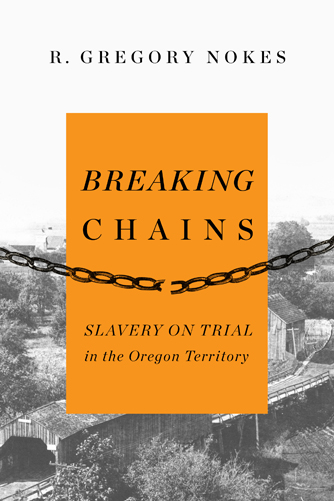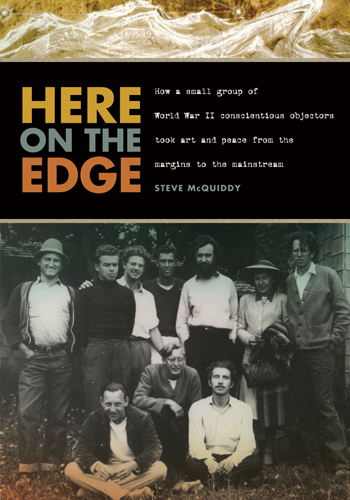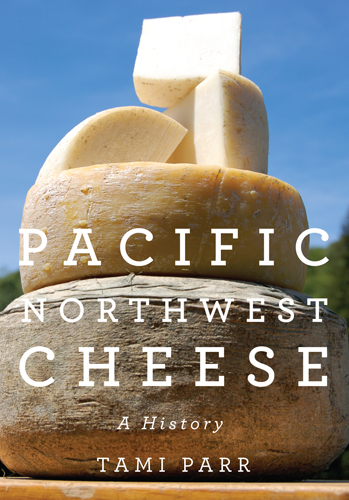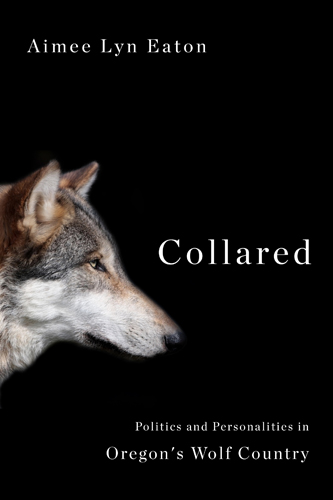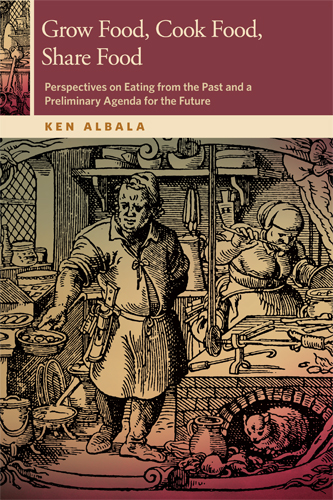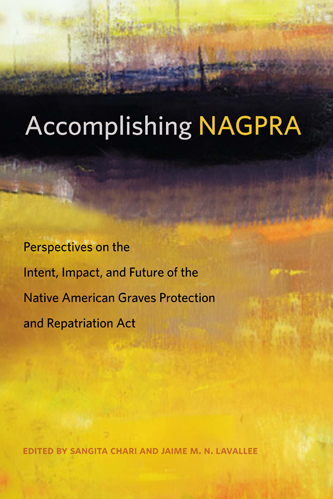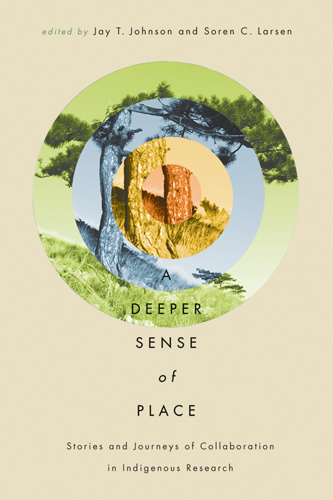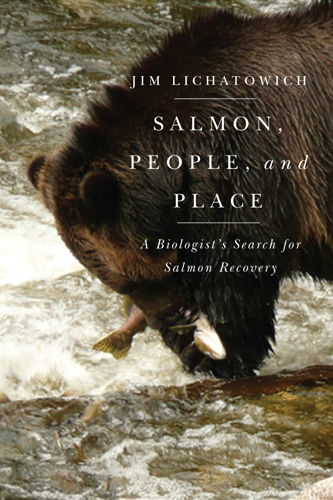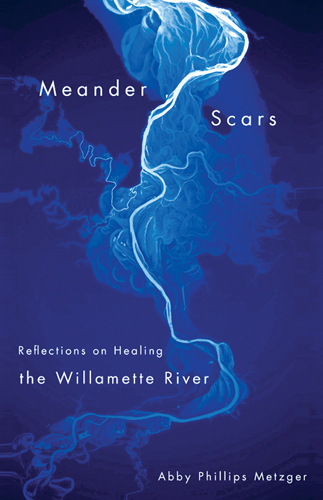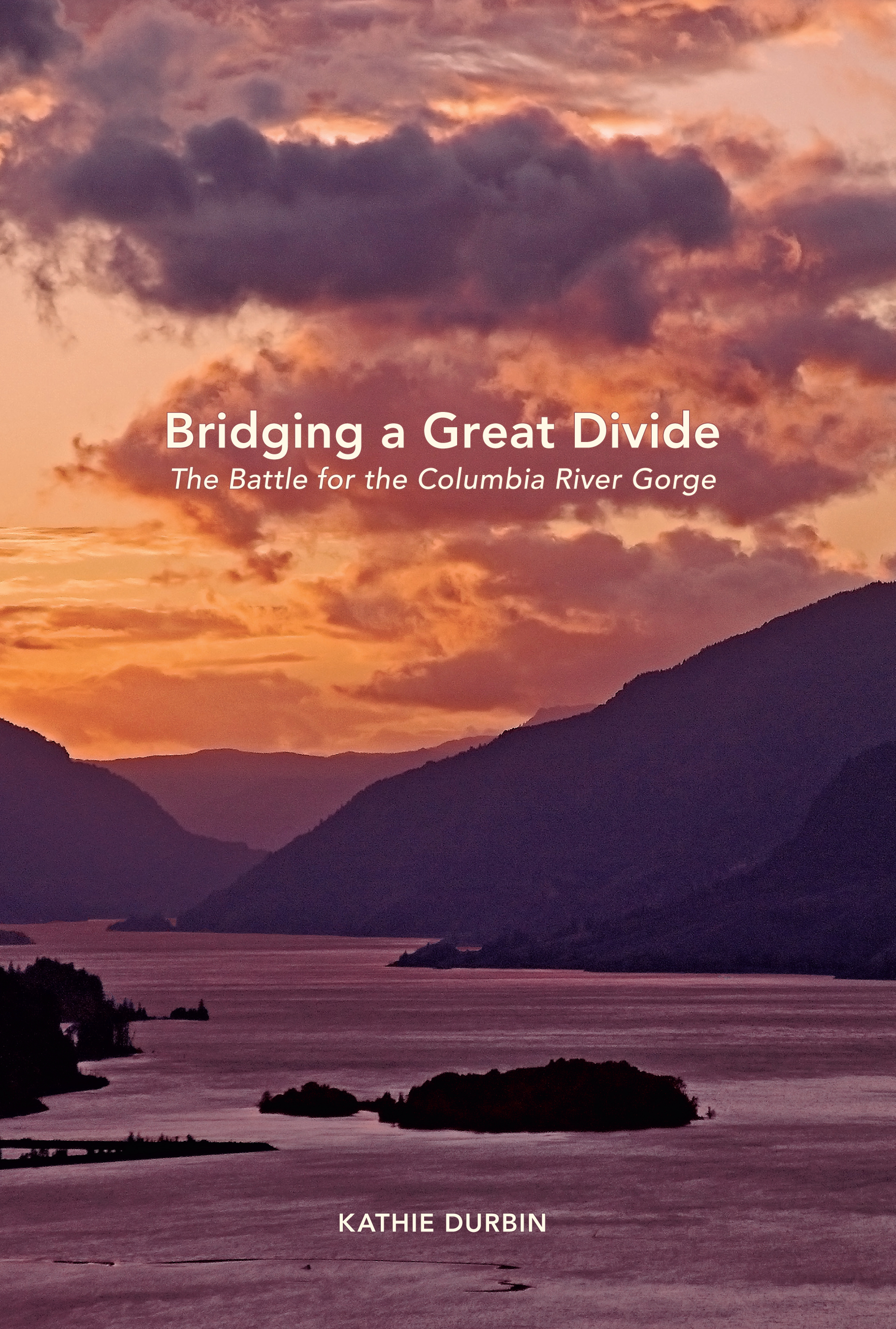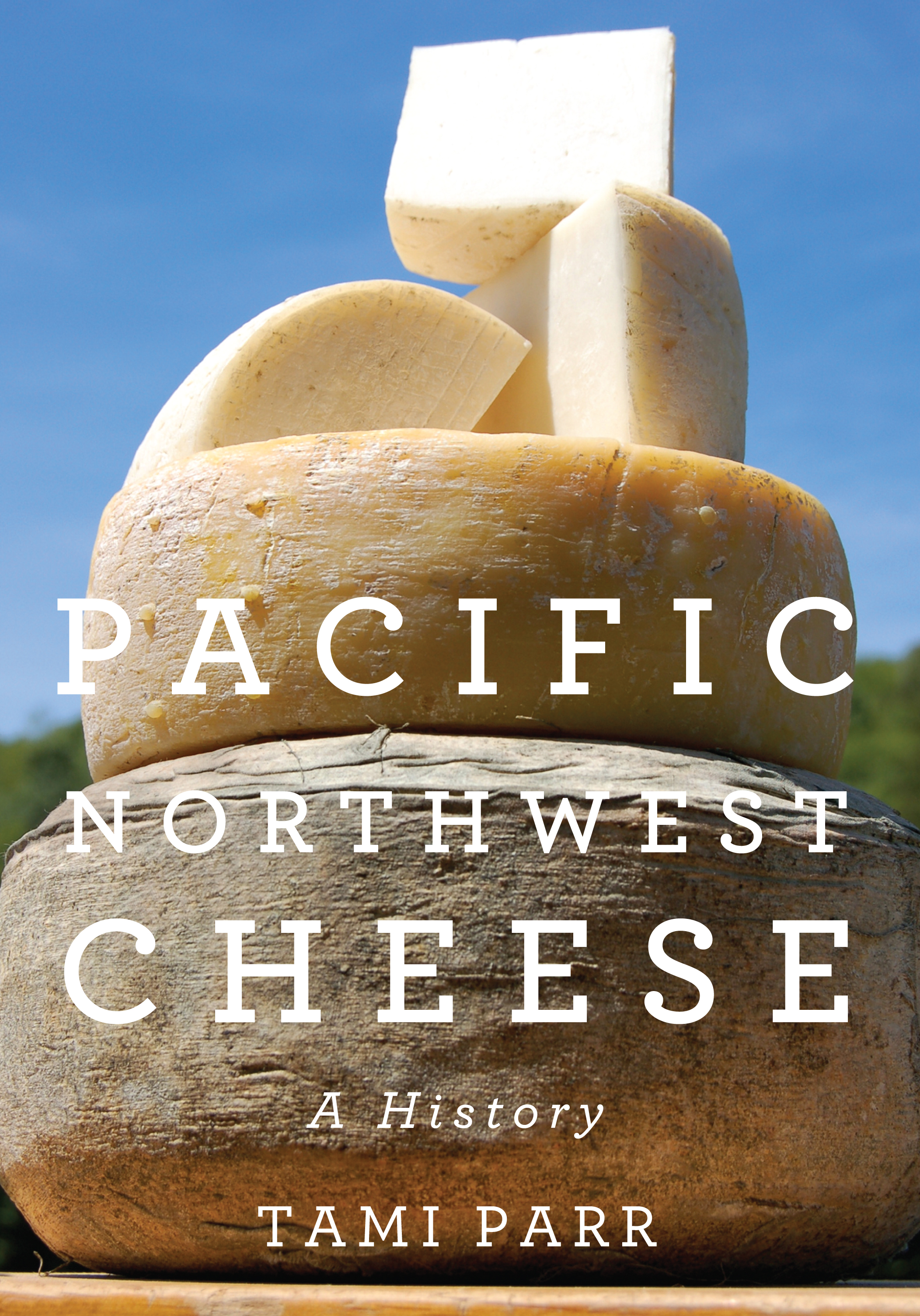Happy Holidays from OSU Press
Happy Holidays from OSU Press
It's been a rewarding year of publishing at OSU Press. Many thanks to our fabulous authors and partners. We're pleased to take a moment to celebrate the authors and books of 2013.
Happy and peaceful holidays to all...
Defining the Pacific Northwest: Publishing at OSU Press
We are pleased to welcome OSU Press Acquistions Editor Mary Elizabeth Braun as a guest on our blog as part of the University Press Week blog tour! The tour continues today at Texas A&M University Press. A complete blog tour schedule is available here.
 There are many ways to define a region, yet no single definition can completely capture its essence. The diverse books published by university presses help define and describe the complexity of various regions, covering everything from a region's history, culture, flora and fauna, geography, natural history, ecosystems, watersheds, and political history, to its folklore, literature, and art. They may include reprint editions of out-of-print regional classics, as well as newly written books. Such books are usually written for general readers as well as scholars and students, with an emphasis on good writing and accessibility, and published in attractively designed, well-illustrated editions. Increasingly, such books are available electronically—some with digital ancillaries—as well as in print.
There are many ways to define a region, yet no single definition can completely capture its essence. The diverse books published by university presses help define and describe the complexity of various regions, covering everything from a region's history, culture, flora and fauna, geography, natural history, ecosystems, watersheds, and political history, to its folklore, literature, and art. They may include reprint editions of out-of-print regional classics, as well as newly written books. Such books are usually written for general readers as well as scholars and students, with an emphasis on good writing and accessibility, and published in attractively designed, well-illustrated editions. Increasingly, such books are available electronically—some with digital ancillaries—as well as in print.
Celebrate University Press Week!
 This week, OSU Press is pleased to celebrate University Press Week with colleagues around the globe.
This week, OSU Press is pleased to celebrate University Press Week with colleagues around the globe.
Thirty-seven presses are participating in the 2013 UP Week blog tour. Each press will blog on a particular theme: profiles of university press staff members, the future of scholarly publishing, subject area spotlights, the importance of regional publishing, and the global reach of university presses. You can view the complete schedule here. check out the daily round-ups at The Digital Digest.
Abby Phillips Metzger on Rivers, Loss, and Mystery
We're pleased to welcome Abby Phillips Metzger, the author of the just-released Meander Scars: Reflections on Healing the Willamette River, as a guest to our blog today.
For the Sake of Mystery
Abby Phillips Metzger
When I was doing research for Meander Scars, I came across some astonishing facts about the Willamette River—ninety channel miles between Eugene and Albany gone, tens of thousands of snags blasted or removed from the channel, and thousands of cubic yards of gravel dredged and dumped each year. The consequences of these actions have created a simplified river system with far f ewer off-channel habitats, which many species depend on to survive and thrive. The facts are astonishing indeed. But one thing that struck me more powerfully than the data was public testimony from a 1971 proposal to install a dam within the Marys River drainage, a watershed within the 12,000-square-mile Willamette Basin. Both sides argued well, with supporters citing increased irrigation for agriculture and improved flood control, and opponents stating concerns for salmon and habitat loss. One citizen’s poetic plea to leave the river alone stuck with me. He said that damming the Marys would take away the “mystery behind the bend.” In this old, forgotten report from a public hearing, I found a beautifully evoked description that spoke of a deeper loss from messing with our rivers, akin to what Robert Michael Pyle calls the extinction of experience. With diminished wildness comes diminished wonder, intrigue, and opportunities to explore what’s behind the next bend. The disappearance of ninety channel miles is a tremendous blow to an ecological system, and it is also a tragic loss of mystery. And what a thing to lose. Mystery is perhaps one of the more provocative forces in human
ewer off-channel habitats, which many species depend on to survive and thrive. The facts are astonishing indeed. But one thing that struck me more powerfully than the data was public testimony from a 1971 proposal to install a dam within the Marys River drainage, a watershed within the 12,000-square-mile Willamette Basin. Both sides argued well, with supporters citing increased irrigation for agriculture and improved flood control, and opponents stating concerns for salmon and habitat loss. One citizen’s poetic plea to leave the river alone stuck with me. He said that damming the Marys would take away the “mystery behind the bend.” In this old, forgotten report from a public hearing, I found a beautifully evoked description that spoke of a deeper loss from messing with our rivers, akin to what Robert Michael Pyle calls the extinction of experience. With diminished wildness comes diminished wonder, intrigue, and opportunities to explore what’s behind the next bend. The disappearance of ninety channel miles is a tremendous blow to an ecological system, and it is also a tragic loss of mystery. And what a thing to lose. Mystery is perhaps one of the more provocative forces in human 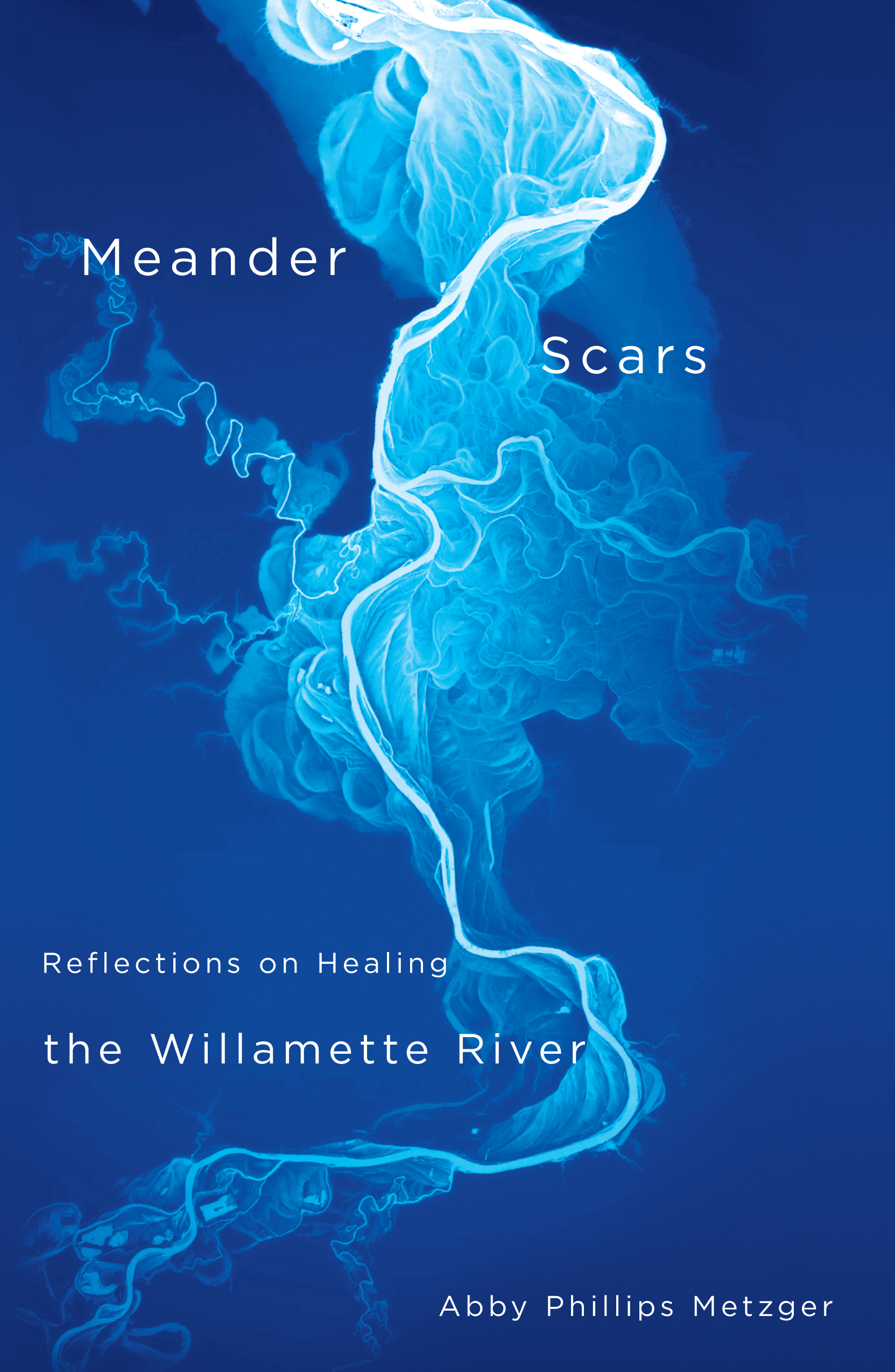 history, luring us to explore all crevices of the globe. It drives our science and our stories, our fables and our myths. In the words of theorist Paul Ricouer and a former English professor of mine, mystery gives rise to story, gives rise to thought. That is, all our rational pursuits first began as attempts to understand and unravel the world’s great mysteries. Whether or not you believe this to be true, it’s an interesting way to frame ecological loss on the Willamette River. What will happen to our stories of the river with fewer enigmas to inspire them? And, following Ricouer’s logic, what will happen to our intellectual contributions to the natural world without the rich stories to nurture them? The days of blasting snags from the channel and filling in sloughs are behind us, but the threat of losing the mystery behind the bend is still there, just in a different form—urbanization, climate change, population growth, to name a few. Fortunately, the Willamette contains a lot of mystery still, even though it has been armored with riprap, dredged, diked, dammed, and developed. As someone who likes to paddle the river, I can tell you that you might see a green heron hunched on a log, clouds of swallows swarming the frayed air, a slinky mink running in the soft mud, or the giant knotted trunks of cottonwoods much older than you. The mystery behind the bend is there. It calls forth, asking us to be present and attuned. Becoming aware of the river’s remaining complexity might be one way to combat the forces that threaten to take it away. So go beyond the next bend, and then the next. Let the unknown take you to some place new. Set adrift. Get lost in the current, and then tell me what you see.
history, luring us to explore all crevices of the globe. It drives our science and our stories, our fables and our myths. In the words of theorist Paul Ricouer and a former English professor of mine, mystery gives rise to story, gives rise to thought. That is, all our rational pursuits first began as attempts to understand and unravel the world’s great mysteries. Whether or not you believe this to be true, it’s an interesting way to frame ecological loss on the Willamette River. What will happen to our stories of the river with fewer enigmas to inspire them? And, following Ricouer’s logic, what will happen to our intellectual contributions to the natural world without the rich stories to nurture them? The days of blasting snags from the channel and filling in sloughs are behind us, but the threat of losing the mystery behind the bend is still there, just in a different form—urbanization, climate change, population growth, to name a few. Fortunately, the Willamette contains a lot of mystery still, even though it has been armored with riprap, dredged, diked, dammed, and developed. As someone who likes to paddle the river, I can tell you that you might see a green heron hunched on a log, clouds of swallows swarming the frayed air, a slinky mink running in the soft mud, or the giant knotted trunks of cottonwoods much older than you. The mystery behind the bend is there. It calls forth, asking us to be present and attuned. Becoming aware of the river’s remaining complexity might be one way to combat the forces that threaten to take it away. So go beyond the next bend, and then the next. Let the unknown take you to some place new. Set adrift. Get lost in the current, and then tell me what you see.
How a Small Group of World War II Conscientious Objectors Took Art and Peace from the Margins to the Mainstream
For twenty years, Steve McQuiddy has been uncovering the story of a conscientious objectors camp on the Oregon coast that plowed the ground for the social and cultural revolutions of the 1960s.
OSU Press is pleased to announce that his long-awaited book, Here on the Edge, is now available. 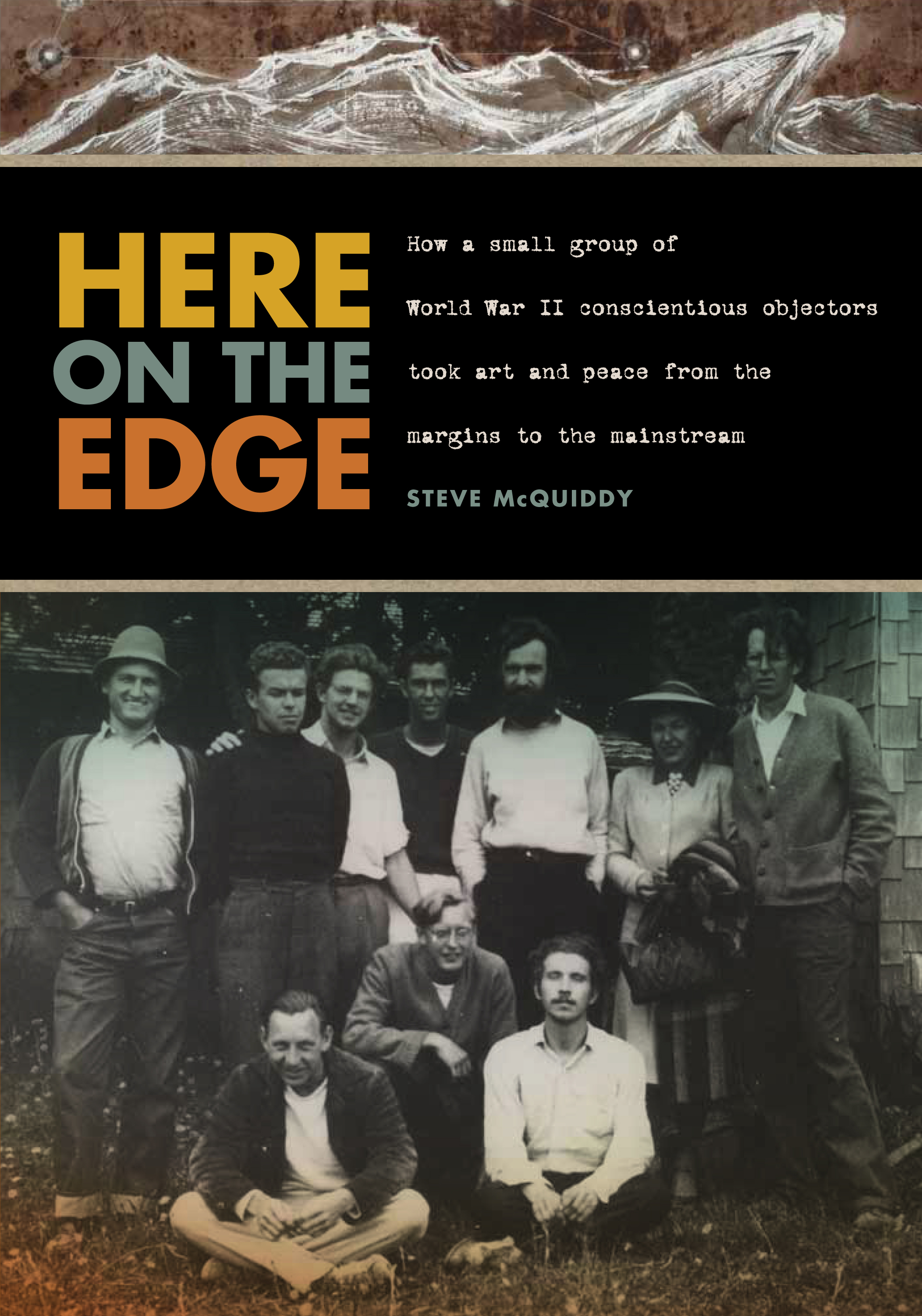
The author will present a slideshow and talk at Powell's Books on Burnside on Wednesday, October 23, 7:30 pm. and at the UO's Knight Library on Wednesday, November 6, 7 pm.
Who Was First? The Story of Cheesemaking in the Northwest
Today we're pleased to welcome creator of the Pacific Northwest Cheese Project, author, and all-around cheese wiz Tami Parr as our guest blogger. Tami's new book, Pacific Northwest Cheese: A History, was released in September by OSU Press. Tami will be a featured author at the Pacific Northwest Booksellers Association conference in Portland next month.
I KNEW THAT if I wrote a history of regional cheesemaking, readers were going to want to know who was the region’s first cheesemaker. But in the early stages of research, I worried over how I could possibly sort out the answer to that question. After all, there were hundreds of dairy farmers that came to in Oregon Country in the nineteenth century and any one of them could have been “the” one. Worse, the moment would probably not have been recorded. How would we ever know? As it turned out, the answer to the question “who was first?” came much easier than I thought. In fact, it turned out to be one of the easiest research problems that I solved while writing this book. The answer came in several steps. In thinking about dairying in the Pacific Northwest I first considered that the native populations of the region lived off of the land and did not keep domesticated animals for food consumption. So clearly there were no cheesemakers among the Native American populations of the Pacific Northwest. In fact, dairy animals—cows, sheep and goats—were brought to the New World, and the Pacific Northwest, by Europeans. So I knew that elusive first cheesemaker would be found among the earliest Europeans who came to the region. What next? We know that thousands of people came to the Pacific Northwest over the Oregon Trail during the mid- to late-nineteenth century, so it was tempting to look among those early homesteaders to find the earliest dairies and cheesemakers. Fast forward for a moment to the twenty-first century…. if you’ve ever been to Vancouver, British Columbia you may know the Hudson’s Bay Company as a big department store on Granville Street, but in fact it’s one of the oldest corporations in existence. First founded, or “chartered” as they liked to say, in 1670, HBC was a global fur trading concern during the eighteenth and nineteenth century. During the eighteenth and early nineteenth centuries, many different countries were vying for control of the region we now call the Pacific Northwestern United States. HBC fur trappers were among the first Europeans to reach the region and they established Fort Vancouver in present 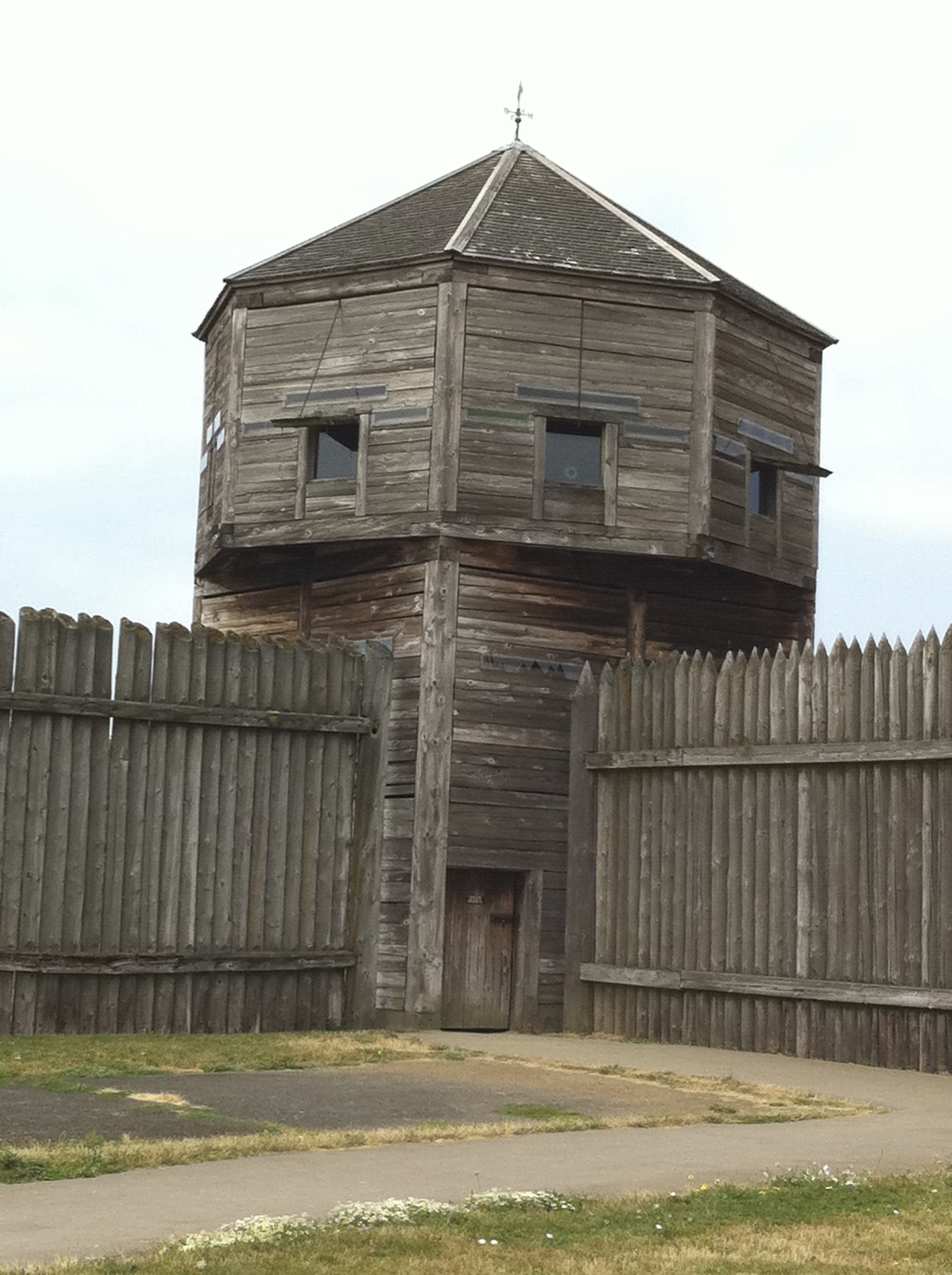 day Vancouver, Washington in 1824-5. What I hadn’t realized prior to doing research for this book is that, in addition to fur trapping and trading, the Hudson’s Bay Company also conducted extensive farming operations at Fort Vancouver and other sites around the Pacific Northwest in order to support its trading operations. HBC grew wheat, barley, peas as well as keeping large herds of cattle, sheep and goats. While I wasn’t able to find any mention of making cheese (or eating cheese, for that matter) in the letters of John McLoughlin, Chief Factor at Fort Vancouver, a number of visitors to Fort Vancouver in the 1830s and 1840s mention the large on-site dairy and cheesemaking operations (very helpful for later research, thanks Narcissa Whitman!). One of the fun things about doing research on the Hudson’s Bay Company is that they kept meticulous records. I spent many hours at the Fort Vancouver research center combing through microfilm of nineteenth century inventory records, which list numbers of animals kept at every HBC establishment in the region. These records confirm the presence of dairies and dairy equipment at the Fort, as well as its satellite dairy operation on Sauvie Island. If you’ve ever delved into your family history you already know that historical research is part detective work, part futility, and you’re often crossing your fingers hoping you will find that one bit of information that leads to something interesting. In this case, I’m thrilled that I was able to put a few pieces of information together and come up with an answer to a very important question!
day Vancouver, Washington in 1824-5. What I hadn’t realized prior to doing research for this book is that, in addition to fur trapping and trading, the Hudson’s Bay Company also conducted extensive farming operations at Fort Vancouver and other sites around the Pacific Northwest in order to support its trading operations. HBC grew wheat, barley, peas as well as keeping large herds of cattle, sheep and goats. While I wasn’t able to find any mention of making cheese (or eating cheese, for that matter) in the letters of John McLoughlin, Chief Factor at Fort Vancouver, a number of visitors to Fort Vancouver in the 1830s and 1840s mention the large on-site dairy and cheesemaking operations (very helpful for later research, thanks Narcissa Whitman!). One of the fun things about doing research on the Hudson’s Bay Company is that they kept meticulous records. I spent many hours at the Fort Vancouver research center combing through microfilm of nineteenth century inventory records, which list numbers of animals kept at every HBC establishment in the region. These records confirm the presence of dairies and dairy equipment at the Fort, as well as its satellite dairy operation on Sauvie Island. If you’ve ever delved into your family history you already know that historical research is part detective work, part futility, and you’re often crossing your fingers hoping you will find that one bit of information that leads to something interesting. In this case, I’m thrilled that I was able to put a few pieces of information together and come up with an answer to a very important question!
Dragonfly Migration Underway
A Facebook friend writes of spotting “thousands of red dragonflies at a beach south of Seal Rock, 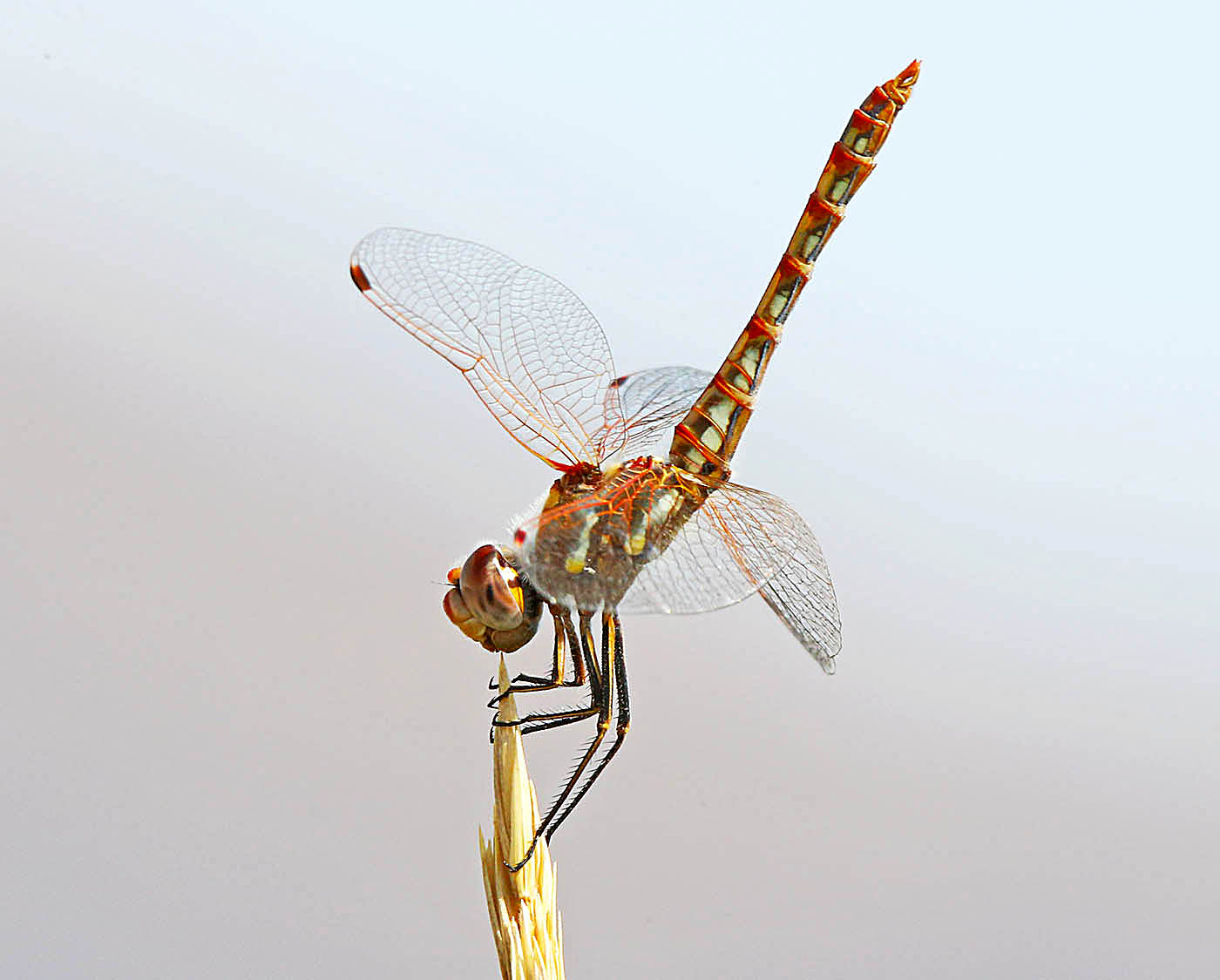 all heading south and none stopping for anything.” In recent days, similar sightings have been reported in Cannon Beach, Neskowin, and other locales, from southwest Washington to the central Oregon coast. Dragonfly migration is underway. Less heralded than the annual migrations of gray whales along the Oregon coast—a phenomenon that now has its own trademarked web site (Whale Watching Spoken Here) and a corps of hearty volunteers—dragonfly migration is no less spectacular. Timing and numbers vary year to year, but 2013 appears to be a major migration. At the onset of fall cold fronts, the main species involved, the Variegated Meadowhawk, seems to funnel to the coast and head south. But beyond that, little is known about these fall migrants. “This is not only an amazing spectacle to witness but a great mystery even to scientists,” says Cary Kerst, co-author with Steve Gordon, of Dragonflies and Damselflies of Ore
all heading south and none stopping for anything.” In recent days, similar sightings have been reported in Cannon Beach, Neskowin, and other locales, from southwest Washington to the central Oregon coast. Dragonfly migration is underway. Less heralded than the annual migrations of gray whales along the Oregon coast—a phenomenon that now has its own trademarked web site (Whale Watching Spoken Here) and a corps of hearty volunteers—dragonfly migration is no less spectacular. Timing and numbers vary year to year, but 2013 appears to be a major migration. At the onset of fall cold fronts, the main species involved, the Variegated Meadowhawk, seems to funnel to the coast and head south. But beyond that, little is known about these fall migrants. “This is not only an amazing spectacle to witness but a great mystery even to scientists,” says Cary Kerst, co-author with Steve Gordon, of Dragonflies and Damselflies of Ore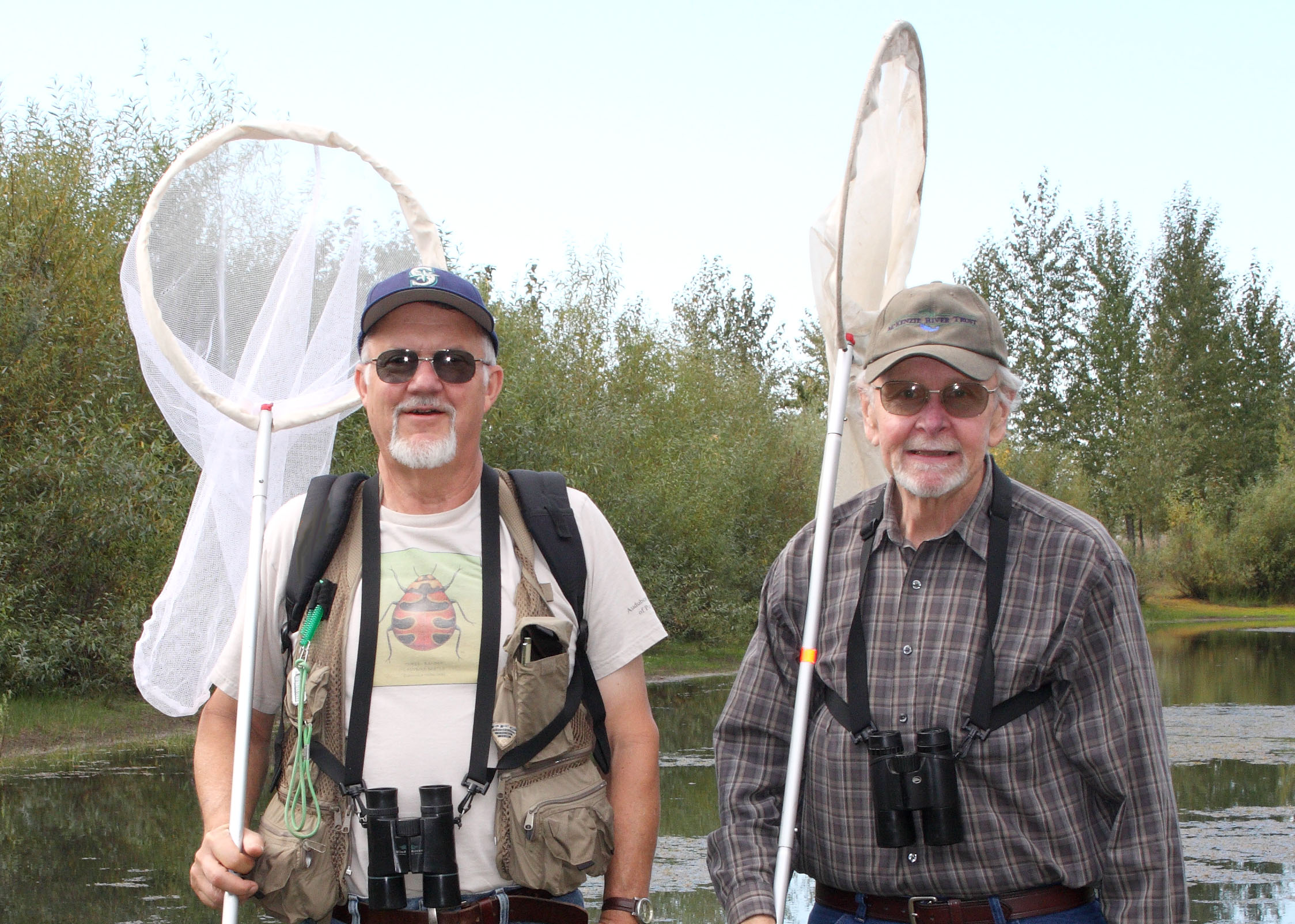 gon, the definitive field guide to the subject. “We don’t know where they are coming from or going or what prompts them to start moving.” Scientists have tried various methods of tracking dragonfly migrations with little success. Now, a partnership has formed to solicit the public’s help to better protect and sustain this phenomenon. The Migratory Dragonfly Partnership offers an opportunity for people to collect and record dragonfly migration observations. Citizen scientists monitor the timing, duration, and direction of travel of migrating dragonflies, and note any additional behaviors observed in migratory flight such as feeding or mating. Learning to identify the main migratory species of dragonflies is an essential first step in migratio
gon, the definitive field guide to the subject. “We don’t know where they are coming from or going or what prompts them to start moving.” Scientists have tried various methods of tracking dragonfly migrations with little success. Now, a partnership has formed to solicit the public’s help to better protect and sustain this phenomenon. The Migratory Dragonfly Partnership offers an opportunity for people to collect and record dragonfly migration observations. Citizen scientists monitor the timing, duration, and direction of travel of migrating dragonflies, and note any additional behaviors observed in migratory flight such as feeding or mating. Learning to identify the main migratory species of dragonflies is an essential first step in migratio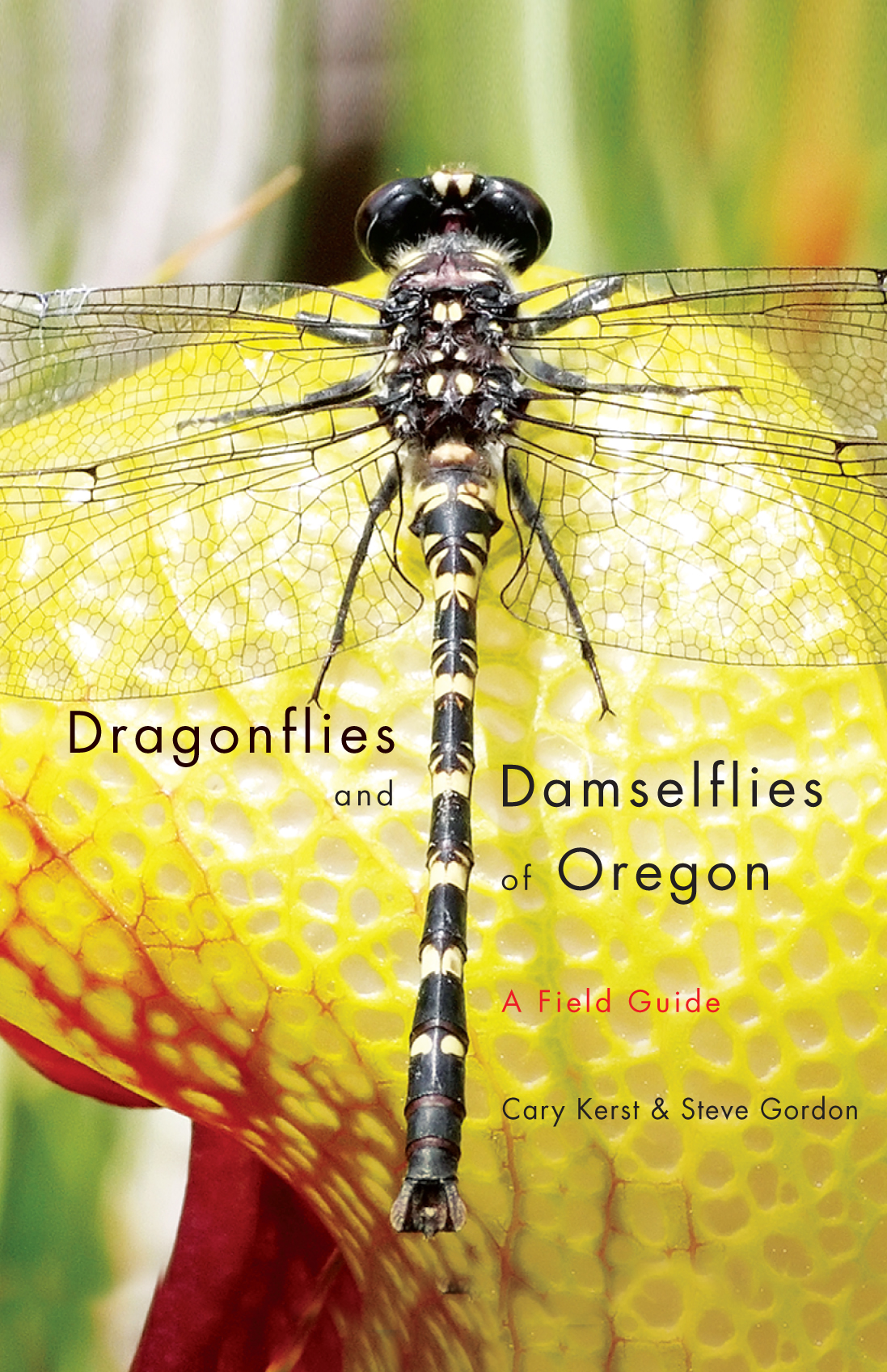 n monitoring, and for Oregon there’s no better place to start than the Kerst and Gordon guide. It includes full color photographs of all species found in the state, along with helpful illustrations and charts showing important identification characteristics. The book also features descriptions of the thirty best sites in Oregon to observe these amazing insects, a useful tool for viewing uncommon species in spectacular settings. With sufficient participation in migration monitoring, it’s not hard to imagine a future in which volunteers line Oregon dunes each fall wearing “Dragonfly Watching Spoken Here” t-shirts and introducing curious onlookers to the wonders of dragonfly migration.
n monitoring, and for Oregon there’s no better place to start than the Kerst and Gordon guide. It includes full color photographs of all species found in the state, along with helpful illustrations and charts showing important identification characteristics. The book also features descriptions of the thirty best sites in Oregon to observe these amazing insects, a useful tool for viewing uncommon species in spectacular settings. With sufficient participation in migration monitoring, it’s not hard to imagine a future in which volunteers line Oregon dunes each fall wearing “Dragonfly Watching Spoken Here” t-shirts and introducing curious onlookers to the wonders of dragonfly migration.
Coming this Fall: Cheese, Salmon, Wolves, and more
We're pleased to present our fall catalog.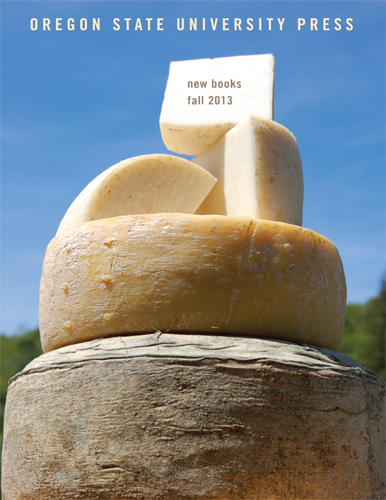 Please send an e-mail if you'd like to receive a print copy, and please read on for a preview!
Please send an e-mail if you'd like to receive a print copy, and please read on for a preview!
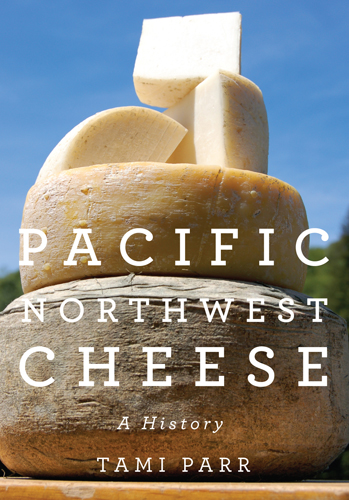 Tami Parr's engaging history shows how regional cheesemaking found its way back to the farm. Pacific Northwest Cheese: A History begins with the first fur traders in the Pacific Northwest and ends with modern-day small farmers in Oregon, Washington, and Idaho. Along the way, Parr tells some untold stories: about the cheese made along the Oregon Trail, of the region's thriving blue cheese and swiss cheese makers, and about the rise of goat's milk cheese.
Tami Parr's engaging history shows how regional cheesemaking found its way back to the farm. Pacific Northwest Cheese: A History begins with the first fur traders in the Pacific Northwest and ends with modern-day small farmers in Oregon, Washington, and Idaho. Along the way, Parr tells some untold stories: about the cheese made along the Oregon Trail, of the region's thriving blue cheese and swiss cheese makers, and about the rise of goat's milk cheese.
California Condors in the Pacific Northwest
Could California condors once again take to the skies in the Pacific Northwest?
The iconic California condor was once at the brink of extinction; at their nadir only 22 birds remained in captivity. However, conservation efforts have shielded the birds from complete extinction; 234 condors live in the wild, and another 170 survive in captivity. 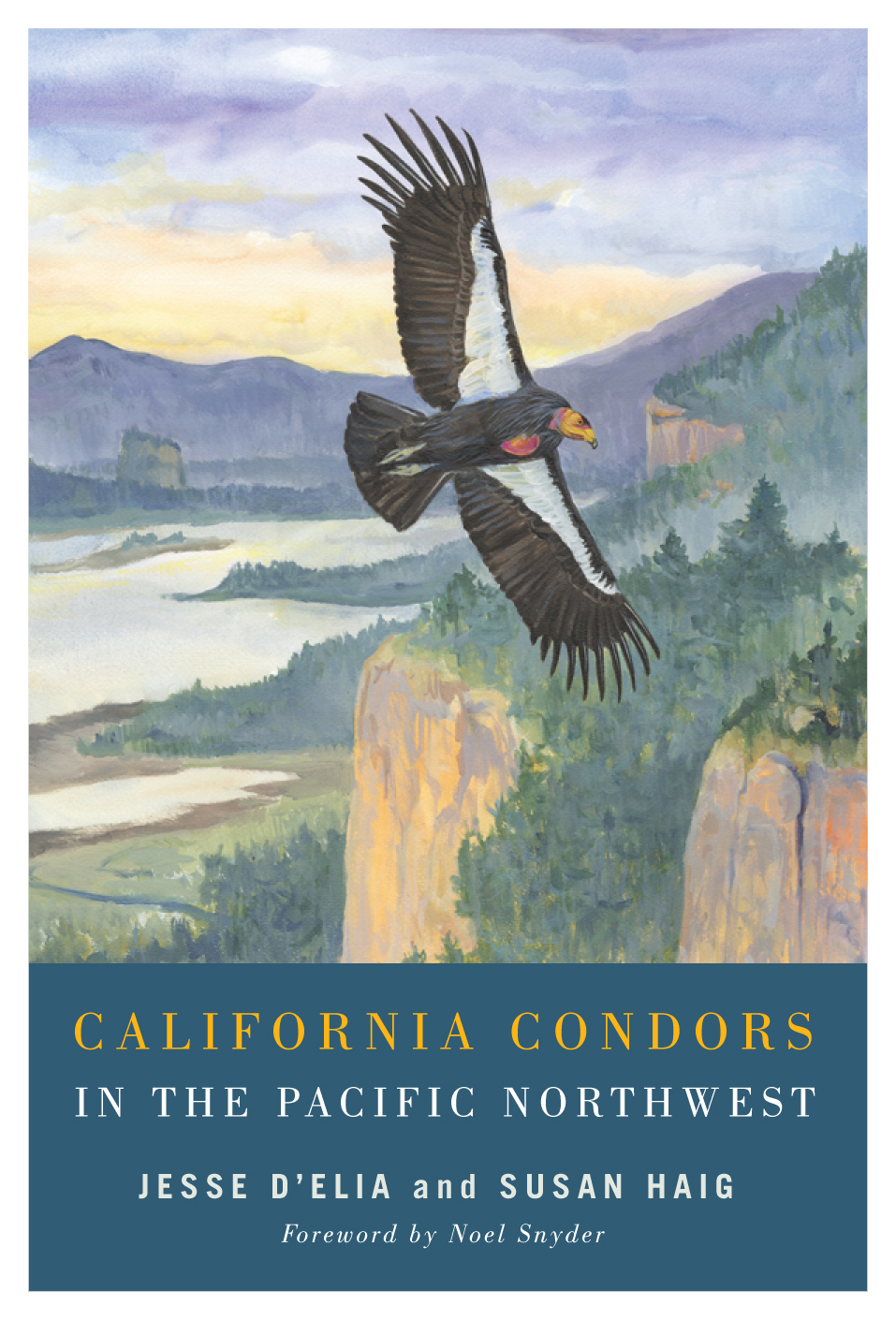
A timely new OSU Press book on condors, out this month, is already generating wide attention. California Condors in the Pacific Northwest by Jesse D'Elia and Susan Haig documents the condor's history in the region and explores the challenges of reintroduction.
"Breaking Chains: Slavery on Trial in the Oregon Territory": An Excerpt
We’re pleased today to share an excerpt from R. Gregory Nokes' new book, Breaking Chains: Slavery on Trial in the Oregon Territory. We invite you to join the author at upcoming author events in Portland and beyond, including this Sunday, May 19 at the Oregon Historical Society; June 4 at Powell's Books; June 13at Broadway Books. For a complete event list, visit www.breakingchainsbook.com. 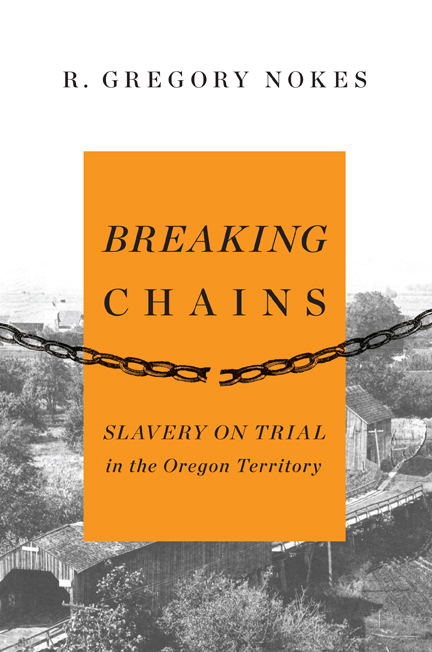 First Slaves
First Slaves

